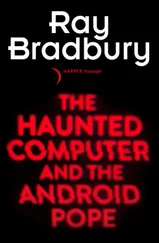It is important to understand that venture capitalists don’t typically pay the existing owners for their piece of the company. What they are doing is putting money into the company itself by financing the firms’ expansion. The entrepreneur and the investor are in the same boat because their stock will be worthless unless the company becomes profitable enough, fast enough.
Existing companies that have managed to grow on their own often refuse venture money unless they are in bad financial trouble. It is relatively expensive money—but it must be remembered that no banker in his right mind will lend money on anything as speculative as a new program that might or might not be next year’s best-seller. In effect, selling shares in exchange for investment capital is like paying a bank 100 percent annual interest on a loan. But many people who have good ideas and good management skills need venture money just to get started in business, and investments in these startup companies have provided some of the most impressive returns for the venture community.
Start-ups are the riskiest of the risky investments, however. The investor is putting money into an organization that doesn’t even exist yet or that at most exists in name only. It doesn’t have products, management, or sales, and it may never have them. Still, if the people with this venture start-up proposal are the right people, and if their analysis of a market opportunity is correct, then the risk may be worthwhile.
Some of the software industry’s most visible and successful companies are venture start-ups. In each case, a strong management team developed a plan based upon exploitation of a market opportunity that was being ignored by existing companies. Although these companies differ in most respects, Lotus and Electronic Arts both possess aggressive management groups who believe they have the key to certain markets and who have been able to persuade some very tough-minded investors to see those markets the same way.
The origins of the most phenomenally successful product introduction in the history of microcomputer software can be traced back to a microcomputer users’ group in Cambridge, Massachusetts, and to a program that was written in 1978 as a favor to an MIT student. The ultimate product of that chain of events was 1-2-3, which was introduced at COMDEX, a huge computer trade show, in the fall of 1982 and officially released in January 1983. In the few days that the show was open, more than a million dollars’ worth of advance orders were written. By April 1983, the program reached the top of Softsel’s chart. By the beginning of 1984, 1-2-3 was outselling the next best-selling program by a factor of more than two to one.
Mitch Kapor, co-author of 1-2-3, was more than yet another under-thirty millionaire programmer. His company, Lotus, was the envy of other software designers and the object of outright awe in the venture capital community. And his program 1-2-3, an “integrated package” that combined several different office-related functions in the same program, was the first sophisticated program of its kind to be successfully released into the market. It set a new standard in business software, triggering an avalanche of integrated packages like it. In the meantime, Lotus’s venture backers, primarily Ben Rosen and his partner, L. J. Sevin, made a killing of legendary proportions. And it wasn’t even Kapor’s first million-dollar program.
The story of Kapor’s route to his software jackpot was as full of unpredictable twists as any other microcomputer entrepreneur’s, and his employment history is probably as eclectic as anybody’s, except perhaps Paul Lutus’s. Kapor had been an authentic mathematics prodigy who discovered and published a new method of calculating square roots while he was still in high school. He entered Yale at a tender age as a mathematics major in 1967, but, as many others of his generation were discovering in those turbulent years, Mitch was finding that a conventional course for his life didn’t particularly appeal to him. He had already been a math prodigy. He wanted to try something else.
He found that he was spending more and more time at the campus radio station, and when he left Yale he took a job at a Hartford, Connecticut, radio station as a disk jockey. Then he went to Europe to study Transcendental Meditation for a year. After he returned to the United States, he became a full-time meditation teacher in Boston. Then he quit and went back to college, where he picked up a master’s degree in psychology. The first job of his new career was as a mental-health aide at a psychiatric hospital, where he found out that “the best contribution I could make to the mental-health field was to leave it.”
By 1977, Mitch Kapor, still in his twenties, discovered yet another enthusiastically embraced avocation to add to his apparently aimless career trajectory. First it was mathematics. Then it was radio and T.M. and psychology. This time, the object of his fascination was the same seductive object that had hooked so many of us—the TRS-80 Model 1. Six months later he bought an Apple. The day after he bought it, he returned to the store to ask a few questions about his new machine, and, never known for his lack of self-confidence, he managed to talk his way into a job as an Apple programmer.
In the store at the same time as Kapor was a businessman who was purchasing an Apple. From the questions the man was asking, Kapor could tell that he was a novice. It turned out that the fellow needed some custom programming done for his Apple. Having been an Apple owner for all of twenty-four hours, Kapor decided that he was an expert and took the job for $5 an hour. He turned out to be good enough at BASIC to learn programming on the job.
Programming was an enjoyable vocation, so he started looking around for other jobs as a programmer. But at that time there were only twenty or thirty other Apple owners in the Boston area. He looked for a users’ group as a way of meeting potential clients. When he couldn’t find any group in existence, he contacted another Apple owner, who got hold of a couple others. The first Boston-area users’ group meeting was held in Kapor’s living room and was attended by seven people. Inauspicious as that beginning may have seemed, the earliest contacts Mitch Kapor made with other Boston-area hobbyists put him in touch with two people who would have an enormous influence on his destiny—Ben Rosen and Robert Frankston.
Back in 1977, users’ groups were the primary channel for distributing software, much of which was created by hobbyists and distributed for free as “public domain” programs. Kapor started collecting early Apple public-domain software and trading programs with other users’ group librarians. At about this time, he met a graduate student at M.I.T., Eric Rosenfeld, who was finishing a research project that required a large amount of the university’s computer time to perform statistical analyses of his research data. Upon hearing Rosenfeld explain how the analysis worked, Kapor offered to write him a program that would do something similar to what M.I.T.’s mainframe statistics programs did, except his version could run on an Apple instead of on one of the expensive timesharing computers.
Kapor’s effort to write a statistics package in BASIC led to the program he named Tiny Troll. The program accomplished the statistical work Rosenfeld needed for his project, and once they saw how much time it saved, they realized that other scientists and students could probably use it, too. Kapor looked at Rosenfeld and said the words that have launched so many of us in the unpredictable game of software publishing: “You know, I bet people would pay money for this.”
With Rosenfeld handling much of the design and Kapor coding the program in BASIC, they created, in 1978, a new version of the original program that would do simple graphics and primitive text editing as well as statistical analysis. In some ways, then, Tiny Troll was a prototype of the much more sophisticated integrated software Kapor was to produce years later. Kapor’s informal distribution of the program through his users’ group led him to meet several people who would later play important roles in his career. Among the people who purchased Tiny Troll was Ben Rosen, who called Kapor for explanations of how different features of the program worked. Another person Kapor met through his users’ group was a programmer named Bob Frankston.
Читать дальше










